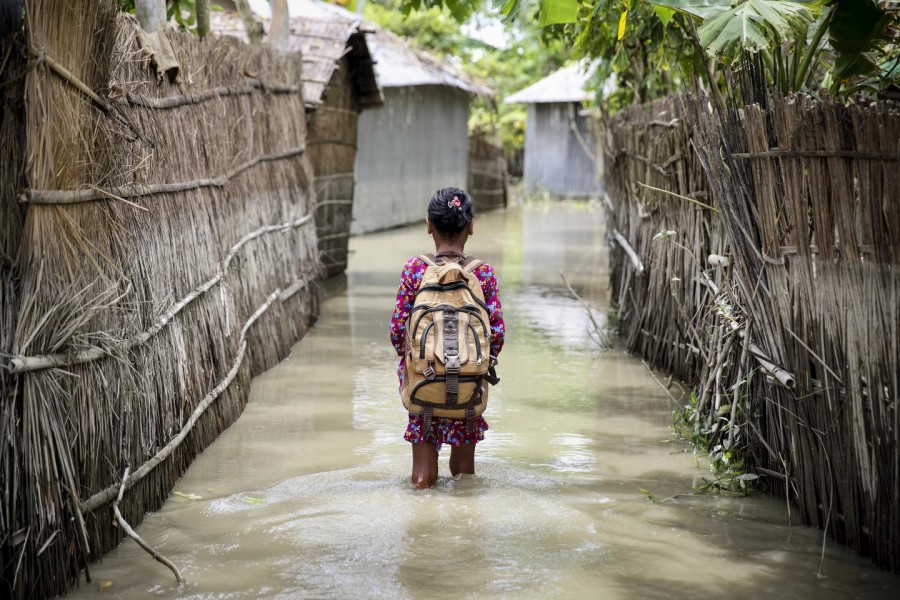The third edition of the annual Global School on Refugee and Migrant Health organised by the World Health Organisation (WHO) in Dhaka concludes today. This five-day open e-learning hybrid event hosted by the health ministry brought together policymakers, UN partner agencies, academics, members of civil society and stakeholders at the Global School allowing them an opportunity to exchange knowledge of and experience in refugee problems. The purpose obviously was to develop capacities of the countries grappling with influx of refugees.
A densely populated country, Bangladesh has become a destination of more than 1.0 million Rohinya refugees in three major ethnic cleansing drives by military junta in Myanmar since 1978. With an area of 261,227 sq miles, Myanmar is almost five times larger than Bangladesh but its population is about one-third of that of Bangladesh. Yet the military rulers in Myanmar have launched genocidal eviction campaigns against the Rohingya people whom the majority Buddhist nationals unreasonably consider outsiders.
Although the WHO's preserve is dedicated health service for migrant and refugees, the UN agency in partnership with its sister UN organisations tends to reach out to address human rights issues let alone the psychological trauma. The United Nations High Commissioner for Refugees (UNHCR) is primarily responsible for providing for forcibly or otherwise displaced people worldwide.
Bangladesh is a highly climate vulnerable country and it has to become an unwilling host to the more than 1.0 million victims of ethnic hostilities in a neighbouring country. But displacement of mass people within its own boundary stares in the face due to climate change. The process has already begun, which the WHO casually referred to. According to it, 7.2 million people in the country have been displaced by climate change in 2022 alone and by 2050, the number of such people is projected to rise to 13.30 million.
By that time the population of the country will reach a point of stabilisation from where the demographic ageing and decline are likely to start. But long before it, the ominous spectre of internal climate migration will unfold cruelly. Much as the international agencies and communities may pat on the back of this country for playing a nice host to the refugees from Myanmar, its own climate refugees will need space for shelter and livelihoods. The extra burden of Rohingya refugee population which is proliferating at a very high rate will surely prove to be the last straw on the camel's back.
Geo-politics could not be nastier in this case. While the generations of Rohingya people will find their lives to go waste, Bangladesh may as well have to pay a heavy price on account of them in terms of ecology, environment, economy and social stability. Inter-community frictions involving local people and the Rohingya have already led to a number of casualties on both sides from time to time. Environmental degradation in Ukhia and Teknaf, already caused, is irreparable. But the drug ---yaba in particular, the factories of which are numerous on the Myanmar side of the border ---smuggling has perilously vitiated the social and economic environment of not only the adjoining hilly districts but also of the entire Bangladesh. As a rogue state, Myanmar is only supplying fuel to the fire.
Some international partners are aware of the danger posed by the Rohingya refugees to Bangladesh but many big players are either paying lip services or pretending to be friends. Even those genuinely committed to helping the country out of the crisis find their support too little in the face of indifference by powers which matter most in international relations. In this connection, the $7.5 million programme to be undertaken by the Netherlands under a deal between it and the International Organisation for Migration (IOM) aimed at enhancing environmental resilience of both the Rohingya and local people in Cox's Bazar is certainly a positive initiative but it is unlikely to restore the environmental damage caused by climate change.
Then, Cox's Bazar is not the only coastal area under threat of almost annual cyclones and storms, the southern coastal belts of Patuakhali, Pirojpur, Bhandaria, Bagerhat and Satkhira are no less, if not more, vulnerable. When repatriation of the Myanmar refugees should have been the priority, such international interventions in the name of environmental or other resilience just make the matter worse for Bangladesh.
The WHO, like other global communities and agencies, has praised Bangladesh's efforts to rise up to the health challenges including the pandemic-time emergency of vaccination in the congested Rohingya camps. Well, such experiences may be of help if climate refugees from the coastal belts have to take shelter in crowded spaces. But that is an unwelcome prospect for any people anywhere. The problem with Bangladesh is that it has no land to spare for displaced people on a massive scale. Loss of lands is expected to be many times more than what can be gained by way of reclamation. Will there be friends to shelter the climate refugees from Bangladesh?
So long any welfare programme taken for refugees concerns the politically and religiously persecuted Rohingya. Now there is a serious need for a more comprehensive programme for the internal climate refugees whose number is likely to go up from this year's 7.1 million with every passing year. A cyclone of Sidr's or Aila's order can suddenly cause the number go beyond the projected tally. Keeping this emergency in view, an environmental resilience programme should be started well before a disaster strikes.


